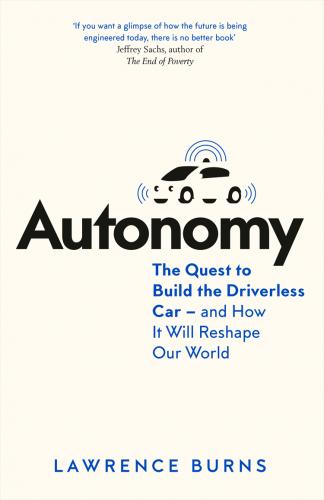William Collins
An imprint of HarperCollinsPublishers
1 London Bridge Street
London SE1 9GF
This eBook first published in Great Britain in 2018 by William Collins
Copyright © Lawrnce D. Burns 2018
Cover image: Shutterstock
Lawrence D. Burns asserts the moral right to be identified as the author of this work
A catalogue record for this book is available from the British Library
All rights reserved under International and Pan-American Copyright Conventions. By payment of the required fees, you have been granted the non-exclusive, non-transferable right to access and read the text of this e-book on-screen. No part of this text may be reproduced, transmitted, down-loaded, decompiled, reverse engineered, or stored in or introduced into any information storage and retrieval system, in any form or by any means, whether electronic or mechanical, now known or hereinafter invented, without the express written permission of HarperCollins
Source ISBN: 9780008302061
Ebook Edition © October 2016 ISBN: 9780008302085
Version: 2018-07-26
To engineers, who make what’s possible real
One new idea leads to another, that to a third and so on through a course of time, until someone, with whom no one of these ideas was original, combines all together, and produces what is justly called a new invention.
—Thomas Jefferson
Contents
Introduction: The Problem with Cars
Chapter One: DARPA’s Grand Challenge
Chapter Three: History Happens in Victorville
PART II: THE NEW DNA OF THE AUTOMOBILE
Chapter Four: A Fish Out of Water
Chapter Six: Close Only Counts in Horseshoes
PART III: THE AGE OF AUTOMOBILITY
Chapter Seven: The 101,000-Mile Challenge
Chapter Eight: The Seeds of Change
Chapter Nine: The $4 Trillion Disruption
Chapter Eleven: Driving Opportunity
I can’t understand why people are frightened of new ideas. I’m frightened of the old ones.
—JOHN CAGE
The way we get around is changing. For the first time in 130 years, we’re in the midst of a major transformation in automobile transportation. In contrast to the personally owned, gasoline-powered, human-driven vehicles that have dominated the last century, we’re transitioning to mobility services based on electric-powered and driverless vehicles, paid for by trip or through subscriptions.
What does this mean? Soon, many of us will no longer need to own or drive a car. Instead, we will rely on services that safely and conveniently use autonomous vehicles to take us where we want to go. The providers will manage every aspect of our transportation experiences, from vehicle parking to cleaning and maintenance to recharging. The hassles of car ownership will be eliminated. No longer will we need to shop for, finance
